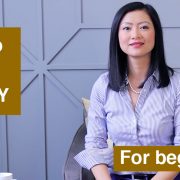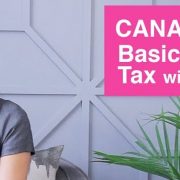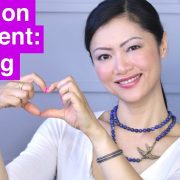Getting Started with Investing
If you’re new to investing, then you’re in the right place.
Let’s learn about financial matters that relate to our day-to-day lives, and prepare for the bright future ahead. In the latest Street Smarts with Taayla video, we’ll get you started with a few investment basics.
Conservative and risky investments
When you are looking for investments to grow your money, there are many options to consider. On one hand, you could choose a safe, conservative investment approach with GICs, Guaranteed Interest Certificates. Or, you could choose a strategy that’s more risky, with potential for a bigger payoff: investing in securities, or the buying and selling of individual stocks.
While GICs are guaranteed to protect your investment, the payoff is usually limited. Plus, if your savings aren’t keeping up with inflation, you’re actually losing money because you’re losing that spending power!
However, individual stocks represent company ownership, and the whims of that stock can dramatically jump or fall in value within a short period. You’re at the mercy of a volatile market, and chances are, by the time you hear news about your investment, it will be too late to act effectively.
Not sure which to choose? Maybe you’re like Goldilocks, and the best fit for you is somewhere in between these two options: mutual funds.
Mutual fund investments
In terms of risk, a mutual fund is a middle ground between investments in GICs and investments in stocks. They’re an assembly of stocks, bonds, and other instruments gathered under one umbrella to be managed by a portfolio manager within a professional investment company.
You, as the unit holder, share the buying power of the fund, while also receiving diversification in ways that you would normally be unable to get alone.
Mutual funds are a great option for those who want to adjust the risk, and payoff, of their investment as they go. Since there are no protections like with GICs, you can still lose money, but the risk is mitigated through the fund’s diversity.
With this investment, you rely on the experience and insight of the portfolio manager to buy and sell within the fund. Ideally, you should know who this person is, and understand their background, style, and history in the industry. While it’s your responsibility to research the mutual funds, it can be intimidating to analyze the 20,000-plus different funds available in Canada.
Where to go for help with your investments
You might receive advice from your neighbour or uncle, or overhear your coworker bragging about his successful investments, but it’s wise to find someone who will look out for you with their knowledge and expertise: a financial advisor.
To find a financial advisor, you can start with your bank. While financial advisors are easily accessible, those inside a bank are usually limited in the funds they can offer. But if you plan to invest more than $250,000, you may get access to the upper echelon of bank advisors who can provide better service with more options.
An alternative solution would be to find a financial advisor who is also a broker. These advisors are independent, and have access to the majority of mutual funds on the market. They tend to focus on fund companies they work with or are most knowledgeable of. Due to their wealth of knowledge, these brokers will be able to explain in depth the credentials of the mutual funds they are recommending and why they are the best fit for you.
Finding the right support takes time and patience. It’s OK to meet with multiple professionals; in fact, it’s encouraged! You should weigh your options and see which styles and personalities of the advisor best fit your needs. Prepare a list of questions to ask each of them, and compare their answers. Make sure they clearly explain how their fees are set up and how their practice is structured.
Look for someone that listens to you, respects your wishes, and explains things in a way that makes sense for you. Clear communication is essential to your success.
With proper guidance and clear communication, getting started in your investment journey is much easier than you might believe.
Thank you for following along as we break down the steps for getting started with investing. Get in touch with me in the comments section or directly through email. I would love to be a resource for you and be a part of your financial advising team.
Please make sure to like and share my video, and subscribe to my channel if you have yet to do so. That way, I can get new exciting topics to you each month!





